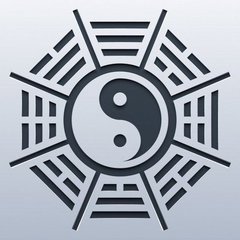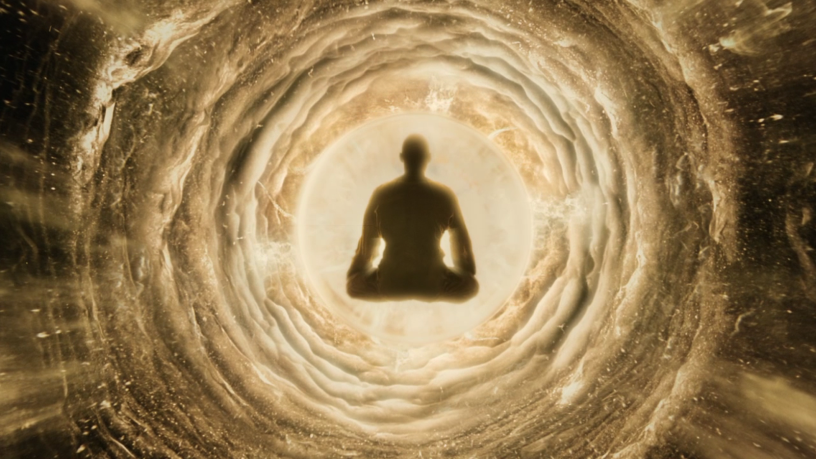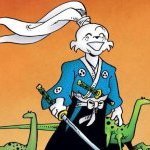-
Content count
383 -
Joined
-
Last visited
-
Days Won
2
About anshino23
-
Rank
Dao Bum
Recent Profile Visitors
3,917 profile views
-
Sounds like Zifagong and Yang Qi.
-
Can I access please? Thanks.
-

Lotus Nei Gong process; how long?
anshino23 replied to galen_burnett's topic in Systems and Teachers of
Hi Galen. So, I am hearing different things here, please correct me if I'm wrong At one level you're asking when you'll reach high stages of development such as stilling the Jing and developing the "Qigong" body on top of also developing the microcosmic orbit (a high stage of internal development); but then at the same time you're saying you are practicing this system to fix a chronic health problem with your back? I am not sure if you see the cognitive dissonance here yourself, but it is apparent to me. If you have access to the academy try watching the Bali video on 'healing' and you'll see what I mean. Going into these arts for fixing back pain seems backwards to me. You can fix back pain through much easier modalities? And fixing backpain does not necessarily imply reaching high stages of internal development or vice-versa, as it would very much depend on its cause. There are countless programs that are focued on fixing back pain, stretching exercises, strengthening exercises and much more. Most likely much more efficient at bringing comfort and ease than the hard internal training that neigong requires. As for your question on duration - this has also been discussed elsewhere. For the majority of practictioners, regardless of background, to create the foundation will take somewhere between 3 and 5 years. This is with practice at least 1 x 2 hours daily, and preferably 2 x 2 hour sessions based on my understanding. Who is your teacher? Your teacher really should have addressed these questions with you directly. Perhaps the teacher was deliberately withholding the answer as a way of suggesting to you that patience and long-term view in these arts is key. I wouldn't focus short-term within these arts. The time will pass anyway, so can just as well train. But if your goal with these arts are "back pain removal" then there are countless other paths, trainings and programs that are much better suited for this goal IMHO.- 33 replies
-
- 4
-

-

-
- length of process
- lotus nei gong
-
(and 1 more)
Tagged with:
-

Inner Journey with Greg Friedman & Mogen Roshi
anshino23 replied to anshino23's topic in Daoist Discussion
I asked ChatGPT based on its knowledge on Zen and Ch'an to explain how someone might be recognized as a lineage holder within Zen. It came up with a pretty great answer: Mind-to-mind transmission, or "ishi no denrai," is a core concept in Zen Buddhism, emphasizing a direct and non-verbal communication of insight from teacher to student. This idea represents the transmission of the Dharma (Buddhist teachings) in an experiential manner rather than through words or scriptures. Yes, within the Zen tradition, there are instances where a master recognizes a student as having achieved a profound realization, often referred to as an "enlightenment experience." This recognition sometimes includes bestowing a Dharma name, or "master-name," and acknowledging the student as a lineage holder. Mind-to-mind transmission can be a key aspect of this process. Here's how this works in context: You seem to have some thoughts @Vajra Fist on this matter, but decide to delete them - not sure why? -

Inner Journey with Greg Friedman & Mogen Roshi
anshino23 replied to anshino23's topic in Daoist Discussion
He briefly talks about being initiated into an inner-door tradition in Japan. I assume that’s why he’s changed his name to Mogen Roshi. He has some absolutely crazy stories. Very fun, but I can see how he might not be everyone’s cup of tea @liminal_luke Curious; did you go to one of his Kunlun seminars or when did you meet him? Can you tell us a bit more about your experience? -
New podcast with Max Christensen (Mogen Roshi) online now for listening. Thought people would enjoy https://www.spreaker.com/user/kxfmradio/mugen-roshi
-
Nevermind, found out
-

If You Have a Question (Supplement to The Energy Cultivator's Handbook)
anshino23 replied to Infolad1's topic in General Discussion
Thanks for your reply. Having spoken with what I consider high level practictioners and met a few, they seem to be of a similar view to Bodri in that only very very very few people have reached authentic dhyana/jhana. Do you think the jhanas are easily attainable, and if so, why / how? Please also see these posts by freeform: Would be interesting to hear your view- 6 replies
-
- 1
-

-
- energy
- information
-
(and 7 more)
Tagged with:
-

If You Have a Question (Supplement to The Energy Cultivator's Handbook)
anshino23 replied to Infolad1's topic in General Discussion
Since you know of and have previously recommended Bodri's work, I'd be very curious to hear your take on his latest: Thanks in advance- 6 replies
-
- 1
-

-
- energy
- information
-
(and 7 more)
Tagged with:
-
Greetings. I'm curious to hear old-timer daobums take on Bill Bodri and his new view on things. If you're familiar with the late master Nan Huai Chin, then you've probably heard of Bodri, who was one of his students. In his earlier works, Bodri focused on the "consciousness-only" approach, emphasizing emptiness meditation and anapana as the keys to success. But in his latest books, Bodri claims that much of what he previously espoused was actually wrong, and that the true key to enlightenment is access to the illusory body, or deva body. He believes that achieving this attainment makes you enlightened and known as a Buddhist Srotapanna Arhat, Hindu jnani, Taoist Immortal, Homo Deus, or 'twice born'. According to Bodri, this attainment is the first rung of the true spiritual ladder that is kept hidden from most people, as they would be dejected about their spiritual efforts and stop cultivating altogether. Bodri also claims that nearly 100% of spiritual practitioners, even monks and nuns, don't know how to cultivate correctly. He argues that one of the main purposes of spiritual practice is to purify and strengthen your subtle body composed of Qi, so that you can achieve the independent deva body attainment while still alive, or lay the foundation for the Sakadagamin stage and then Causal body Anagamin achievement after death. So, what do you all think about Bodri's new perspective? Do you agree or disagree with his ideas? Here are some excerpts from his new book that may be interesting for this discussion: This kind of approach seems very different than the more streamlined Daoist lineages such as those taught by Longmenpai and other famous daoist schools where there's a clear line of development -- and, in a way, is much more "new age" in that Bodri basically says to "steal"/"borrow" techniques from all different kinds of lineages and combine them all in the hope of having the most success, and to do this consistently along with everything else. In any case, I would be curious to hear people's thoughts...
-
@Maddie: I disagree. Both orgasm, ejaculation and 'mental stimulation' without actual ejaculation deplete jing. Freeform has written at-length about this, and I find his depicition quite apt. Please see his full response here: Now if we look at all wisdom traditions whether it be Buddhism, Daoism, Hinduism, Jewish Mysticism and even Theosophy they all unequivocally agree that sexual desire is something to be risen above. For instance, in the Anguttara Nikaya, the Buddha taught that "The enjoyment of sexual pleasure is a hindrance to the path, it obscures the awareness of noble truths." In Chapter 14 of the Lotus Sutra, it says: "Desire is like a flame, a poisonous snake, a trap, a net, a fetter, a flood, a fierce wind, an enemy, a foe. Therefore, all the sons and daughters of the Buddha must cut off desire, discard it, and wipe it out." Similarly, in Chapter 27 of the Avatamsaka Sutra, it says: "Desires are like the river that flows on and on, without end, but the wise cut off their desires and cross over, leaving all afflictions and defilements far behind." Even if we see to Vajrayana, Milarepa, the most revered Tibetan Siddha, wrote extensively about his own struggles with desire and his journey to transcend it. In one of his songs, he wrote: "Desire is like a beggar's bowl And I am like a pauper. But when I give up desire I am like a king." If we move to Theosophy, Blavatasky in her book "The Voice of the Silence," wrote: "Kill out desire; but if thou killest it take heed lest from the dead it should again arise." Of course, because sexual desire is such a strong force, there are many unseen forces that guide humans to create whole systems of spirituality that try to convince people that practices of sexuality and base desires are the epitome of spiritual practice. Here's just one example...
-

Anyone on TRT that also practices sexual alchemy?
anshino23 replied to Centli's topic in General Discussion
Testosterone replacement therapy. -
Fully understood. Thank you for the reply. Could you elaborate a bit more on your experience working with your Daoist neidan teacher and the methods taught in Vajrayana? Did both or only one of them employ visualization as a method for bringing about transformation?
-
Who taught you neidan?








.thumb.jpeg.611f83584012f7d113169af2a4fd9318.jpeg)
